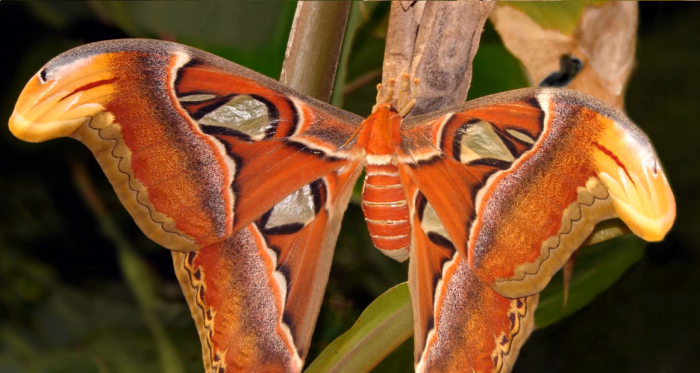The name “Atlas moth” has intriguing origins as well. Some believe the moth earned its name due to the patterns on its wings, which are said to resemble maps. Alternatively, the name is also linked to the Titan Atlas, a figure from Greek mythology condemned to carry the sky on his shoulders. This symbolic burden reflects the moth’s massive wingspan.
Intriguingly, female Atlas moths are significantly larger than males and attract mates by releasing irresistible pheromones from their abdomens. Males, equipped with long, feathery antennae, detect these pheromones to locate their potential partners. Once the moths lay their eggs under leaves, bluish-green caterpillars emerge and begin their feeding frenzy, enjoying Jamaican cherry trees, limes, and citrus fruits as their favorite meals. After a week or two, the caterpillars encase themselves in a silken cocoon, beginning the pupal stage, which lasts about a month.

Photo Credit: Patryn/Youtube
Upon adulthood, male Atlas moths do not possess a mouth and rely on fat reserves accumulated during their caterpillar phase for survival. They quickly mate and soon pass away.
As we marvel at the ingenuity of nature’s mimicry, it is essential to remember the real-life cobras, famous for their threatening hoods. When feeling threatened or agitated, cobras extend their hoods, which consist of skin flaps connected to long ribs, while also hissing loudly to ward off potential predators.

Photo Credit: Rob/Twitter
The mesmerizing world of nature’s mimicry continues to astound and inspire, with the Atlas moth showcasing its brilliance in adapting to its surroundings and captivating the world with its remarkable beauty and intelligence.
Sources: Daily Mail





